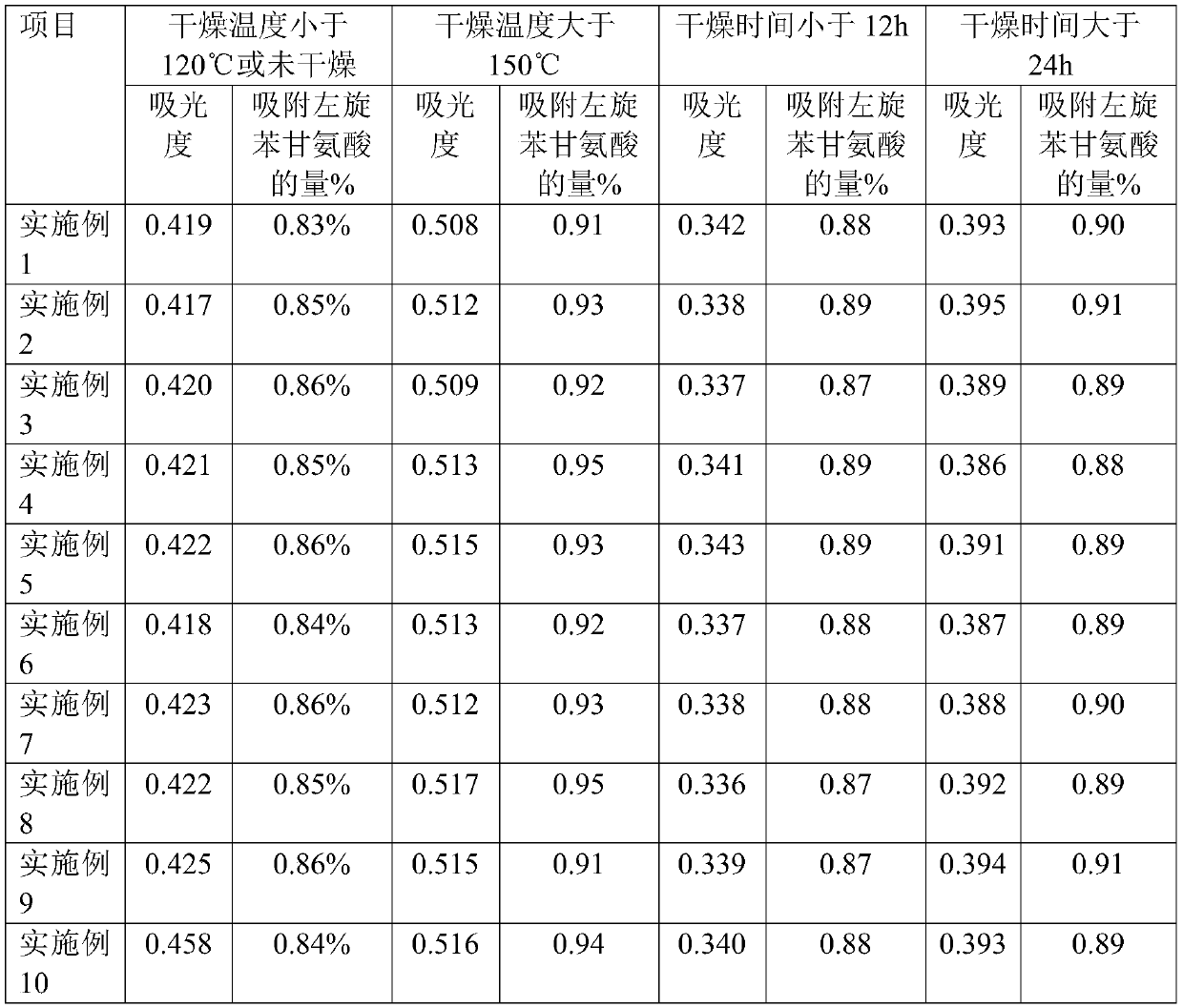L-phenylglycine decolorization process
A technology of L-phenylglycine and process is applied in the field of L-phenylglycine decolorization technology, which can solve the problems of single decolorization process and unsatisfactory decolorization effect of L-phenylglycine, and achieve the effects of excellent decolorization effect, excellent decolorization effect and low production cost.
- Summary
- Abstract
- Description
- Claims
- Application Information
AI Technical Summary
Problems solved by technology
Method used
Image
Examples
Embodiment 1
[0019] The solution produced by 1000ml L-phenylglycine (pH=9.5, absorbance ((λ=410nm) 1.305) was heated to 50°C, and then the solution produced by L-phenylglycine was passed through a 50mm glass column equipped with a decolorant, and the outside of the glass column was wrapped with Heating belt, heating belt with temperature control system control, control the temperature of the glass column to 60±5°C, control the outflow rate of the solution produced by L-phenylglycine from the glass column to 7ml / min, collect the effluent solution from the glass column, and it is completed Decolorization treatment. The absorbance (λ=410nm) of the outflowing L-phenylglycine solution was detected to be 0.206.
[0020] Described depigmentation agent is: 4g molecular sieve, 7g NaZSM-8 (Si / Al greater than 200) molecular sieve, 25g Naβ (Si / Al greater than 200) molecular sieve, 64g USY molecular sieve. The molecular sieves used are small balls with a diameter of 2-3mm.
[0021] The above-mention...
Embodiment 2
[0025] The solution produced by 1000ml L-phenylglycine (pH=9.5, absorbance ((λ=410nm) 1.305) was heated to 60°C, then the solution produced by L-phenylglycine was passed through a 50mm glass column equipped with a decolorant, and the outside of the glass column was wrapped with Heating belt, heating belt with temperature control system control, control the temperature of the glass column to 60±3°C, control the outflow rate of the solution produced by L-phenylglycine from the glass column to 8ml / min, collect the effluent solution from the glass column, and it is completed Decolorization treatment. The absorbance (λ=410nm) of the outflowing L-phenylglycine solution was detected to be 0.207.
[0026] Described decolorizing agent is: AlPO 4 -34 molecular sieve 5g, NaZSM-5 (Si / Al greater than 200) molecular sieve 15g, Naβ (Si / Al greater than 200) molecular sieve 30g, NaY molecular sieve 50g. The molecular sieves used are small balls with a diameter of 2-3 mm.
[0027] The above-m...
Embodiment 3
[0031] The solution produced by 1000ml L-phenylglycine (pH=9.5, absorbance ((λ=410nm) 1.305) was heated to 70°C, and then the solution produced by L-phenylglycine was passed through a 50mm glass column equipped with a decolorant, and the outside of the glass column was wrapped with Heating belt, heating belt with temperature control system control, control the temperature of the glass column to 70±5°C, control the outflow rate of the solution produced by L-phenylglycine from the glass column to 9ml / min, collect the effluent solution from the glass column, and it is completed Decolorization treatment. The absorbance (λ=410nm) of the outflowing L-phenylglycine solution was detected to be 0.207.
[0032] Described depigmentation agent is: Molecular sieve 2g, AlPO 4 -34 molecular sieve 5g, NaZSM-8 (Si / Al greater than 200) molecular sieve 5g, NaZSM-11 (Si / Al greater than 200) molecular sieve 10g, mordenite (Si / Al greater than 100) 20g, USY molecular sieve 40g, AlPO 4 -5 molecula...
PUM
| Property | Measurement | Unit |
|---|---|---|
| absorbance | aaaaa | aaaaa |
| absorbance | aaaaa | aaaaa |
| absorbance | aaaaa | aaaaa |
Abstract
Description
Claims
Application Information
 Login to View More
Login to View More - R&D
- Intellectual Property
- Life Sciences
- Materials
- Tech Scout
- Unparalleled Data Quality
- Higher Quality Content
- 60% Fewer Hallucinations
Browse by: Latest US Patents, China's latest patents, Technical Efficacy Thesaurus, Application Domain, Technology Topic, Popular Technical Reports.
© 2025 PatSnap. All rights reserved.Legal|Privacy policy|Modern Slavery Act Transparency Statement|Sitemap|About US| Contact US: help@patsnap.com


